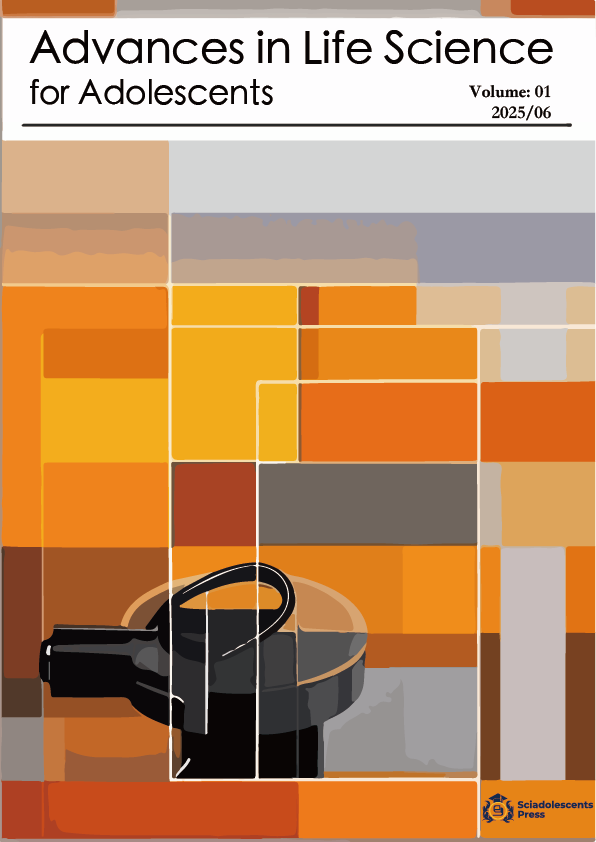Influences of Pipetting Fluid Dynamics on Cell Status
DOI:
https://doi.org/10.64135/advadolesc.2025.02.02Keywords:
Pipetting, Hydrodynamics, Cell StatusAbstract
In cell experimental operations, pipetting is one of the most common basic procedures. Hydrodynamic factors during pipetting, such as flow rate, shear force, and pressure changes, can exert multiple effects on cell status (including many adverse impacts). This article comprehensively elaborates on the relevant principles of pipetting hydrodynamics, as well as its influences on cell morphology, viability, proliferation, differentiation and other states. It also explores methods that can effectively reduce adverse effects and optimize pipetting operations, aiming to provide a theoretical basis for the standardization and precision of pipetting in cell experiments, and promote the improvement of the accuracy and reliability of cell experiments.
References
1. Paudel, R., L. Fusi, and M. Schmidt, The MEK5/ERK5 Pathway in Health and Disease. Int J Mol Sci, 2021. 22(14).
2. Luo, S., et al., Activation of cGAS-STING signaling pathway promotes liver fibrosis and hepatic sinusoidal microthrombosis. Int Immunopharmacol, 2023. 125(Pt B): p. 111132.
3. Wang, X., et al., Fluid shear stress-induced down-regulation of microRNA-140-5p promotes osteoblast proliferation by targeting VEGFA via the ERK5 pathway. Connect Tissue Res, 2022. 63(2): p. 156-168.
4. Sun, D., et al., Fluid shear stress induced-endothelial phenotypic transition contributes to cerebral ischemia-reperfusion injury and repair. APL Bioeng, 2024. 8(1): p. 016110.
5. Polk, T., et al., Human dermal microvascular endothelial cell morphological response to fluid shear stress. Microvasc Res, 2022. 143: p. 104377.
6. X, S., et al., Controversy in mechanotransduction - the role of endothelial cell-cell junctions in fluid shear stress sensing. J Cell Sci, 2024. 137(17).
7. Haroon, M., et al., Fluid shear stress-induced mechanotransduction in myoblasts: Does it depend on the glycocalyx? Exp Cell Res, 2022. 417(1): p. 113204.
8. Akashi, Y., et al., Cyclic pressure-induced cytokines from gingival fibroblasts stimulate osteoclast activity: Clinical implications for alveolar bone loss in denture wearers. J Prosthodont Res, 2023. 67(1): p. 77-86.
9. Gurkan, U.A., Biophysical and rheological biomarkers of red blood cell physiology and pathophysiology. Curr Opin Hematol, 2021. 28(3): p. 138-149.
10. Ye, Q., et al., Apoptotic extracellular vesicles alleviate Pg-LPS induced inflammatory responses of macrophages via AMPK/SIRT1/NF-κB pathway and inhibit osteoclast formation. J Periodontol, 2022. 93(11): p. 1738-1751.
11. Di, X., et al., Cellular mechanotransduction in health and diseases: from molecular mechanism to therapeutic targets. Signal Transduct Target Ther, 2023. 8(1): p. 282.
12. Zhan, H., et al., Fluid shear stress-mediated Piezo1 alleviates osteocyte apoptosis by activating the PI3K/Akt pathway. Biochem Biophys Res Commun, 2024. 730: p. 150391.
13. Li, Q., et al., TRPV4-induced Müller cell gliosis and TNF-α elevation-mediated retinal ganglion cell apoptosis in glaucomatous rats via JAK2/STAT3/NF-κB pathway. J Neuroinflammation, 2021. 18(1): p. 271.
14. Liu, Q., et al., HMGB2 promotes chondrocyte proliferation under negative pressure through the phosphorylation of AKT. Biochim Biophys Acta Mol Cell Res, 2021. 1868(11): p. 119115.
15. Wang, X., et al., Fluid shear stress regulates osteoblast proliferation and apoptosis via the lncRNA TUG1/miR-34a/FGFR1 axis. J Cell Mol Med, 2021. 25(18): p. 8734-8747.
16. Kourouklis, A.P., et al., Control of hydrostatic pressure and osmotic stress in 3D cell culture for mechanobiological studies. Biomater Adv, 2023. 145: p. 213241.
17. Zheng, L., et al., The effects of fluid shear stress on proliferation and osteogenesis of human periodontal ligament cells. J Biomech, 2016. 49(4): p. 572-9.
18. Jiang, M., et al., Fluid shear stress and endothelial cells synergistically promote osteogenesis of mesenchymal stem cells via integrin β1-FAK-ERK1/2 pathway. Turk J Biol, 2021. 45(6): p. 683-694.
19. Luo, L., et al., Hydrostatic pressure promotes chondrogenic differentiation and microvesicle release from human embryonic and bone marrow stem cells. Biotechnol J, 2022. 17(4): p. e2100401.
20. Ravi, V.M., et al., Spatially resolved multi-omics deciphers bidirectional tumor-host interdependence in glioblastoma. Cancer Cell, 2022. 40(6): p. 639-655.e13.
21. Liu, S. and Z. Lin, Vascular Smooth Muscle Cells Mechanosensitive Regulators and Vascular Remodeling. J Vasc Res, 2022. 59(2): p. 90-113.
22. Yan, Z., et al., Fluid shear stress induces cell migration via RhoA-YAP1-autophagy pathway in liver cancer stem cells. Cell Adh Migr, 2022. 16(1): p. 94-106.
23. Hinton, P.V., et al., Impact of Fluid Flow Shear Stress on Osteoblast Differentiation and Cross-Talk with Articular Chondrocytes. Int J Mol Sci, 2022. 23(16).
24. Hardt, M., et al., Rho Kinases and Reactive Oxygen Species in Autophagy Regulation by Pressure in Periodontal Ligament Cells. Braz Dent J, 2024. 35: p. e245944.
25. Higashikuni, Y., et al., NLRP3 Inflammasome Activation Through Heart-Brain Interaction Initiates Cardiac Inflammation and Hypertrophy During Pressure Overload. Circulation, 2023. 147(4): p. 338-355.
Downloads
Published
Issue
Section
License
Copyright (c) 2025 Advances in Life Science for Adolescents

This work is licensed under a Creative Commons Attribution 4.0 International License.


